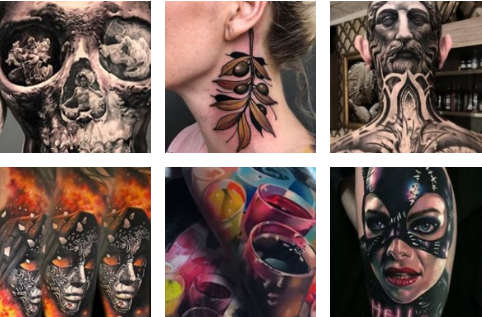Tattooing is an intricate art form that blends science and creativity. Understanding the anatomy of tattoos involves exploring the layers of skin, the composition of inks, and the functionality of tattoo machines. This article delves into these essential aspects, offering insights into the fascinating world of tattoos.
The Skin: A Canvas for Tattoos
The human skin is a complex organ composed of multiple layers, each playing a vital role in the tattooing process. The primary layers involved are the epidermis, dermis, and hypodermis. Tattoos are created by injecting ink into the dermis, the second layer of skin. This layer is ideal because it is more stable than the epidermis, ensuring the tattoo’s longevity.
The dermis contains collagen and elastin fibers, providing structure and elasticity. The stability of this layer ensures that the ink remains trapped, making the tattoo permanent. Understanding the skin’s anatomy helps professional tattoo artists deliver precise and lasting designs.
Ink: The Lifeblood of Tattoos
Tattoo inks are specially formulated to be safe for injection into the skin. They consist of pigments suspended in a carrier solution. The pigments provide the color, while the carrier solution keeps the mixture evenly distributed and aids in application.
Inks must be sterile and safe, adhering to strict regulations to prevent adverse reactions. Different pigments have unique properties, and understanding these helps artists achieve vibrant and long-lasting colors. The choice of ink can significantly impact the quality and durability of a tattoo.
Tattoo Machines: Tools of the Trade
Tattoo machines are the backbone of the tattooing process. These devices have evolved significantly over the years, with modern machines offering greater precision and control. There are two primary types of tattoo machines: coil and rotary.
Coil Tattoo Machines
Coil machines are the traditional choice and operate using electromagnetic coils to move the needle up and down. They are known for their power and ability to handle various tattooing styles. However, they can be heavier and noisier compared to their rotary counterparts.
Rotary Tattoo Machines
Rotary tattoo machines have gained popularity due to their lightweight design and quiet operation. They use a rotating motor to drive the needle, providing smooth and consistent performance.
The precision offered by rotary machines makes them a preferred choice for intricate designs. The rotary tattoo machine in Australia or any other location, is becoming increasingly popular among professional tattoo artists.
Professional Tattoo Equipment: Ensuring Quality and Safety
Using professional tattoo equipment is crucial for achieving high-quality results and ensuring client safety. This includes needles, grips, power supplies, and aftercare products. Each component plays a vital role in the tattooing process, contributing to the overall outcome.
Professional tattoo equipment must be sterilized and used according to industry standards to prevent infections and complications. The importance of maintaining a clean and hygienic workspace cannot be overstated, as it directly impacts the health and satisfaction of clients.
The Importance of Aftercare
Proper aftercare is essential for the healing and longevity of tattoos. After getting a tattoo, the skin needs time to recover, and following aftercare instructions can prevent infections and ensure the tattoo heals properly.
Aftercare typically involves keeping the tattoo clean, applying a healing ointment, and avoiding sun exposure. Hydration and nutrition also play a role in the healing process, as healthy skin heals faster and more effectively.
Conclusion: The Art and Science of Tattoos
Understanding the anatomy of tattoos involves appreciating the complexity of the skin, the composition of inks, and the technology behind tattoo machines. Each element is crucial for creating beautiful and lasting tattoos.
Knowledge of these aspects enhances the tattooing experience for artists and clients alike, ensuring safe and satisfying results. As the tattoo industry continues to evolve, innovations in professional tattoo equipment and techniques will further refine this timeless art form.

